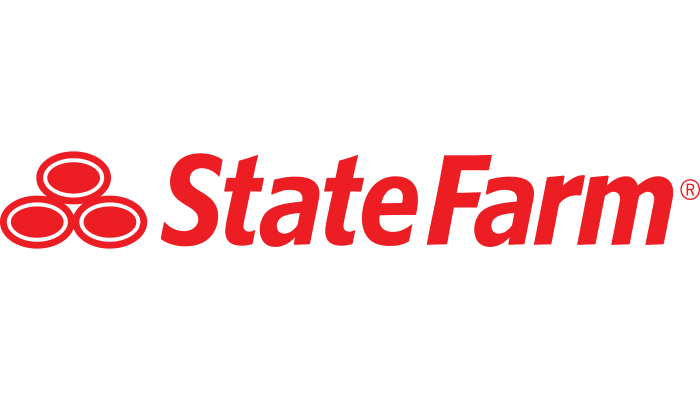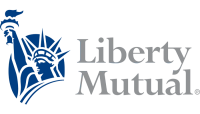Best Usage-Based Car Insurance Companies
State Farm has the best usage-based car insurance program for most drivers. It offers a maximum discount of 30%, and rates won't go up for risky drivers.
Find Cheap Auto Insurance Quotes in Your Area
Many of the largest insurance companies in the United States offer drivers the chance to lower rates with better driving habits. These programs are often called usage-based insurance (UBI) or telematics programs.
Safe drivers can typically save between 10% and 40%. But it's important to pay attention to the behaviors your company tracks. Some companies will penalize you for using your phone while driving and a few will even raise your rates if you're a risky driver.
Best usage-based insurance programs
Usage-based insurance programs offer discounts if you practice safe driving habits.
Insurance companies track your driving patterns using an app or a device that plugs into your car. Most companies penalize you for hard braking and nighttime driving. Some also factor in distracted driving and phone use while you're on the road.
Safe drivers can earn a maximum discount of 10% to 40% off their total car insurance bill, depending on which company they pick. Some programs also offer a sign-up discount, which is usually around 10%.
Best overall UBI program: State Farm
-
Editor rating
- Sign-up discount: Yes
- Max. safe driving discount: 30%
- Available in: 47 states
Pros and cons
State Farm Drive Safe & Save is the best telematics program for most drivers.
Safe drivers can earn a discount of up to 30% off of State Farm's already affordable rates. Full coverage from State Farm costs 33% less than the national average without any discounts. So you could end up paying much less than average if you can avoid dangerous driving behavior like hard braking and distracted driving.
In addition, State Farm won't raise your rates if you don't perform well with Drive Safe & Save. That makes it a great choice if you're unsure about your driving habits but want to try and earn a discount.
However, there are a few downsides to the Drive Safe & Save program. Along with other behaviors, your discount is partially based on whether you use your phone while driving. And you'll need to let State Farm track your habits and location for as long as you'd like to keep the discount. That means it's not the best choice for people who regularly use their phone in the car or feel uncomfortable sharing information with their insurance company over a long period of time.
Best usage-based insurance discount: Nationwide
-
Editor rating
- Sign-up discount: 10%
- Max. safe driving discount: 40%
- Available in: 45 states
Pros and cons
The Nationwide SmartRide program offers the best opportunity for safe drivers to save money.
Nationwide gives a 10% discount when you sign up for the SmartRide program. Safe drivers can earn a discount of up to 40% on their car insurance. That's the highest percentage listed among UBI programs from major insurance companies.
Maximum discounts with UBI programs
Company | Max. discount |
|---|---|
| Nationwide | 40% |
| Allstate | 40% |
| State Farm | 30% |
Progressive is not included, as it doesn't provide a maximum discount available.
Nationwide won't raise your rates if you try SmartRide and get a bad score. That makes it a great choice for drivers who want to try out a telematics program but don't want to risk paying more for insurance.
In addition, SmartRide doesn't penalize you for touching your phone while driving. So you don't have to worry about making handheld calls or using your phone's GPS.
However, you'll need to let Nationwide monitor your driving habits for as long as you'd like to keep your SmartRide discount. So people who don't like the idea of continuously sharing their location and other driving info with their insurance company should consider another option.
Best telematics program for privacy: Liberty Mutual
-
Editor rating
- Sign-up discount: 10%
- Max. safe driving discount: 30%
- Available in: 41 states and Washington, D.C.
Pros and cons
Liberty Mutual RightTrack is the best choice for drivers who want a discount but don't want to share their location with an insurance company for a long period of time.
Every company that offers usage-based insurance is going to track you to gather data on your driving. However, RightTrack only monitors your driving habits for three months. At the end of the three-month period, you'll earn a discount that you'll keep as long as you're insured with Liberty Mutual.
Many other usage-based insurance programs review your driving each renewal period. This means your driving will be monitored continuously.
Good driving habits can earn you up to 30% off with Liberty Mutual RightTrack, which is one of the larger discounts offered by major insurance companies. However, residents of some states and Washington, D.C. may see a rate increase if they have bad driving habits. These can include driving late at night and hard braking. In addition, RightTrack monitors phone usage in these states, so you'll be penalized for distracted driving.
Compare the best auto insurance based on driving habits
Most telematics programs track similar driving habits, like hard braking and late-night driving.
But there are a few important differences that you should consider before signing up for a program.
- Maximum discount
- If your rates can go up
- If using your phone while driving will impact your discount
- How long a company will track your driving habits
Compare UBI programs
Discount
Features
Max discount | Sign-up discount | Can rates go up? | |
|---|---|---|---|
| Allstate | 40% | Yes | Yes |
| Geico | 10% | Yes, in most states | Yes |
| Liberty Mutual | 30% | 10% | Sometimes |
| Nationwide | 40% | 10% | No |
| Progressive | $231/yr avg. | $94 avg. | Yes |
USAA SafePilot is only available to military members, veterans and their families.
Discount
Max discount | Sign-up discount | Can rates go up? | |
|---|---|---|---|
| Allstate | 40% | Yes | Yes |
| Geico | 10% | Yes, in most states | Yes |
| Liberty Mutual | 30% | 10% | Sometimes |
| Nationwide | 40% | 10% | No |
| Progressive | $231/yr avg. | $94 avg. | Yes |
USAA SafePilot is only available to military members, veterans and their families.
Features
Review period | Tracks phone usage | Availability | |
|---|---|---|---|
| Allstate | Ongoing | No | 49 states |
| Geico | Ongoing | Yes | 37 states * |
| Liberty Mutual | 90 days | Yes | 41 states * |
| Nationwide | Ongoing | No | 45 states |
| Progressive | Ongoing | Sometimes | 50 states * |
* An asterisk denotes a program is available in Washington, D.C.
Is usage-based insurance right for me?
Usage-based insurance is a good choice if you're confident in your ability to drive safely and stay off your phone.
Drivers with good habits can save between 10% and 40% on their car insurance, depending on the company they choose.
If you're not confident that you're a safe driver, usage-based insurance could still be worth considering. However, you should choose a company that won't raise rates if you get a bad score, like:
Tips to get the best usage-based car insurance discount
The best way to maximize your discount is to pay attention to what your usage-based insurance program tracks and try to avoid those behaviors when driving.
The most common habits UBI programs track to determine your discount are:
- Hard braking
- Driving late at night
- How far or often you drive
- Phone use while driving
Nearly every company tracks hard braking and late-night driving.
Late-night driving is a major factor because more accidents happen in the overnight hours. That's because drivers are tired and alcohol is more likely to be involved.
Some companies also consider:
- Accelerating quickly
- Cornering
- Overall speed
- Type of road
- Driving in bad weather
- Driving in traffic
How do UBI programs affect my privacy?
When you sign up for a usage-based insurance program, you give up some privacy in exchange for a discount.
The amount of data an insurance company collects varies by company and is also based on state regulations.
UBI systems rely on either a plug-in device for the vehicle or an app. With a plug-in device, the company tracks the vehicle and not the driver.
App-based programs track the location of your phone to determine the length of your trips. These programs can require some adjustment if you're a passenger or if you're driving and a passenger uses your phone.
Program | Review period | Device options |
|---|---|---|
| Allstate Drivewise | Continuous | App |
| Geico DriveEasy | Continuous | App |
| Liberty Mutual RightTrack | 90 days | App and plug-in |
| Nationwide SmartRide | Continuous | App, plug-in and connected car |
| Progressive Snapshot | Continuous | App and plug-in |
You can see the data that the insurance company collects in many cases. In some states, it's legally required that data be made available to customers.
The fact that your data is being tracked can be both good and bad. Some companies have data about your movement and location. This info can be used by government authorities and in some court cases.
That could be a good thing if you're accused of something you didn't do and your location could prove your innocence. However, it could also provide evidence against you or show you were at fault in an accident.
Difference between usage-based and pay-per-mile insurance
Both usage-based car insurance and pay-per-mile insurance track your driving to help determine how much you pay for insurance.
Pay-per-mile programs are based on the number of miles you drive, so the more you drive, the more you'll pay. But these programs use a lot less data than usage-based programs because they only track the number of miles you drive.
Usage-based insurance is a discount program that can reduce your rates if you're a safe driver.
Frequently asked questions
Which company has the best usage-based insurance?
What is usage-based coverage?
Usage-based car insurance gives safe drivers a discount by monitoring their driving habits using a phone app or plug-in device. It could be a good choice for you if you avoid driving at night, don't use your phone in the car and practice other safe driving habits.
Is usage-based insurance worth it?
Usage-based insurance could be worth it if you're confident that you're a safe driver. You can save between 10% and 40% on your car insurance if you avoid hard braking, don't drive late at night and don't use your phone while on the road.
But some companies will raise your rates if you have risky driving behaviors. Be careful about which program you sign up for if you're unsure whether usage-based car insurance is right for you.
Methodology
To find the best usage-based car insurance, ValuePenguin considered several key factors in each company's UBI program.
- Maximum discount available
- Length of review period
- Potential rate increases
- Availability
- Driving behaviors that affect rates
- How much data a company collects
The size of your discount will vary based on your driving and your base car insurance rate.
Editorial Note: The content of this article is based on the author's opinions and recommendations alone. It has not been previewed, commissioned or otherwise endorsed by any of our network partners.






